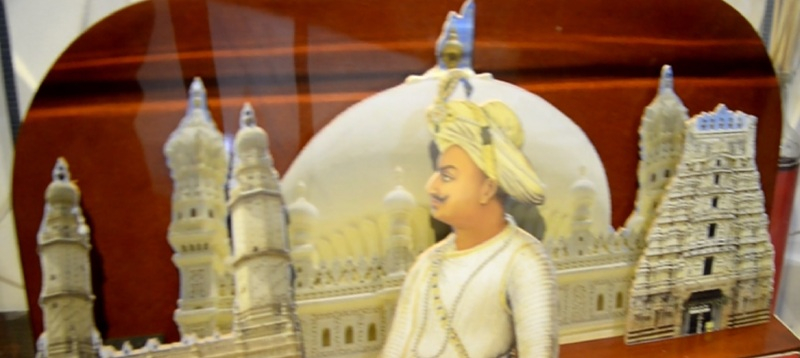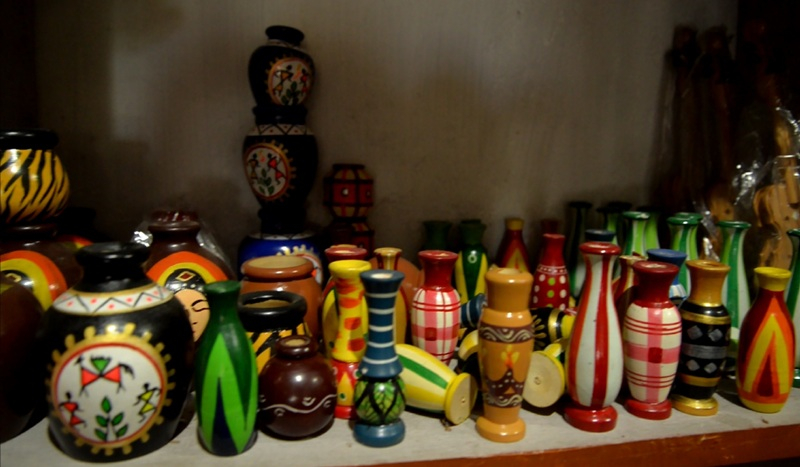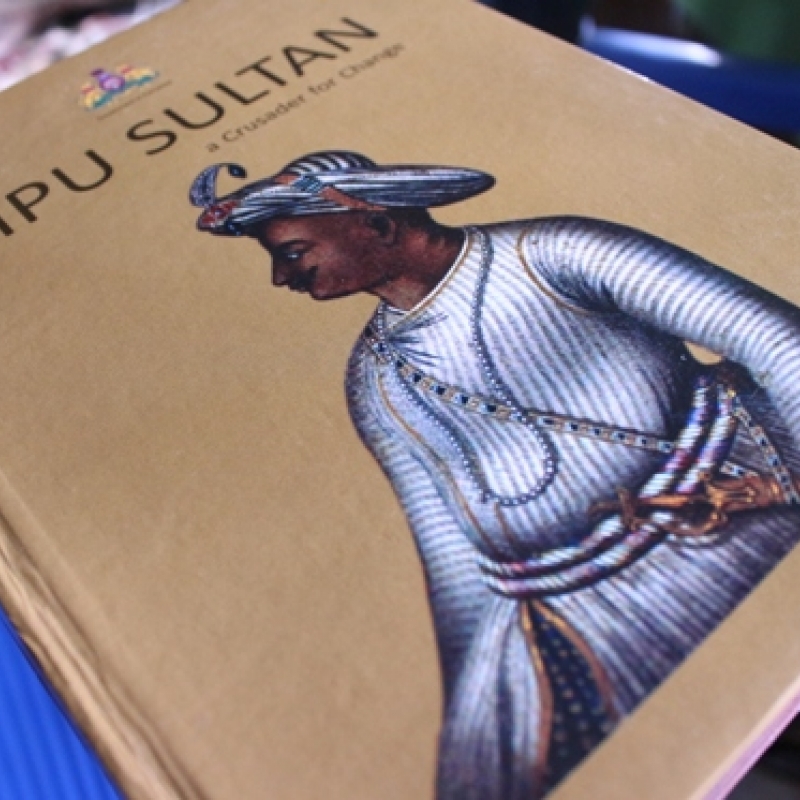Despite various definitions, the history of Channapatna toys is steeped in theories; there are different perceptions about their origins, including links to Persia. It is commonly perceived that Tipu Sultan (ruler of what was then the Mysore State between 1782 and 1799) encouraged Persian artisans to lend their creative inputs to develop the art form, but discussions with various experts in Channapatna—near Srirangapatna, the capital of Mysore State at that time—bring out a totally different perspective. There is, however, a strong consensus that a Persian influence was responsible for popularising the toys and drawing global attention to them through the export market. Tipu Sultan himself had a strong Persian connection, using Persian as his official administrative language and not the local Kannada or Urdu.

Fig. 1: Tipu Sultan, the ruler of erstwhile Mysore State, was known for his innovations. Photo credit: K.B. Sachin
Today, Channapatna toys carry a World Trade Organization (WTO) Geographical Indication (GI) label, signifying their specific geographical origin according to a regulation enacted by India as a member of the WTO. This label conveys to their original craftspeople the exclusive rights to market Channapatna toys under that name.
Karimuddin is an 87-year-old retired professor of Kannada and a resident of Ganjam in Srirangapatna. Six generations ago, his ancestors helped Tipu Sultan's family after the fall of the kingdom to the British in 1799. He recalls that Tipu Sultan and his father, Hyder Ali, always looked for innovative ways to develop their kingdom, advocating strong export-import, industrial, and agricultural policies.
Karimuddin during an interview provided insight into Tipu Sultan’s history: Tipu Sultan made friends with the French and would have won the third war against the British if the French had not betrayed him. The French military was fighting alongside Tipu Sultan against the British in India; simultaneously, the French were also fighting against the British in Europe. Finally, France and Britain came to an agreement following which the Governor of Pondicherry—which was then under French control—ordered withdrawal of all French troops from Srirangapatna. This weakened Tipu Sultan and he lost the war.
Fig. 2: Karimuddin, 87 year-old retired professor of Kannada, is a native of Ganjam. Photo credit: K.B. Sachin
Karimuddin becomes emotional when speaking about Tipu Sultan's regime. He explains in the interview, Tipu Sultan definitely had a strong Persian link as his administrative language was Persian. All his farmans (official orders) are in Persian; not Kannada or Urdu. In fact, Urdu was a nascent language then. A deep study of the farmans signed by Tipu Sultan and an analysis of his strategies for development provide insight into Tipu Sultan’s administrative ability. Apart from getting people from Persia, he also got people from China, Iran, and even an engineer, Fiott de Havilland, from France to provide their expertise. He also looked at neighbouring states and tried to bring the best practices of those states to his kingdom. The British have also praised Tipu Sultan. Lord Wellesley, while addressing his generals before the war, said that Tipu Sultan is not an ordinary person; the world may forget you and me, but they will not forget him. Deal with him with proper care.
For the present generation of toymakers, however, knowledge of the Persian link to Channapatna toys comes only from what they have heard from their parents and grandparents. Common among the current generation of toymakers is the refrain, 'We have heard about Persian links, but cannot give a clear picture because this handicraft evolved more than 200 years ago. We also understand that this was popularised during Tipu Sultan's regime and are now proud to carry on this handicraft. We are looking forward to this handicraft growing beyond India's boundaries and regaining its glory despite competition, because we still retain the unique nature of the toys.'

Fig. 3: Catering to modern demands, toymakers now produce various other wares. Photo credit: K.B. Sachin












